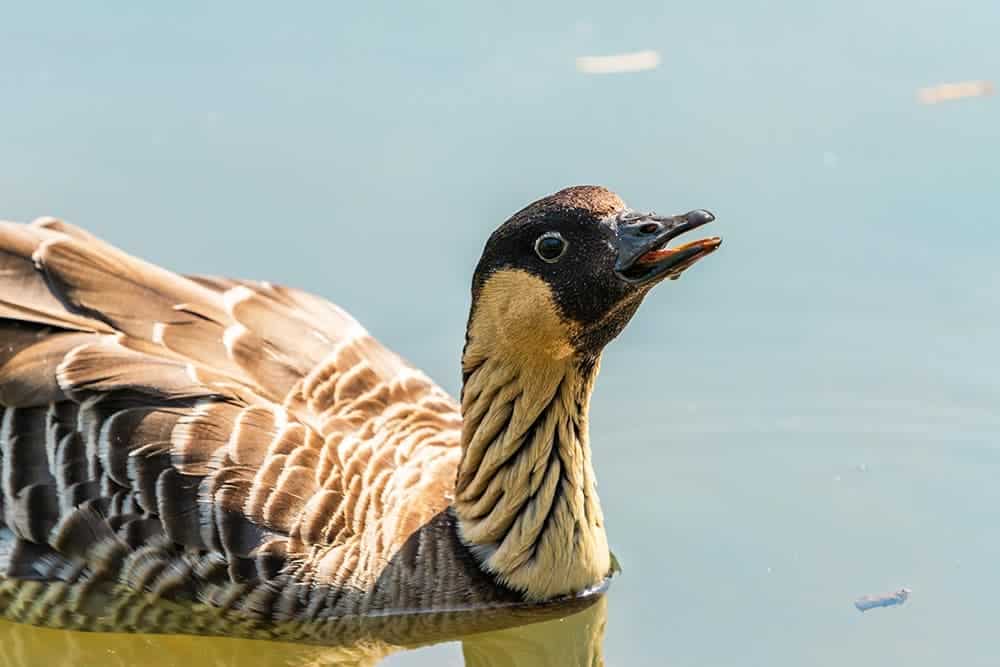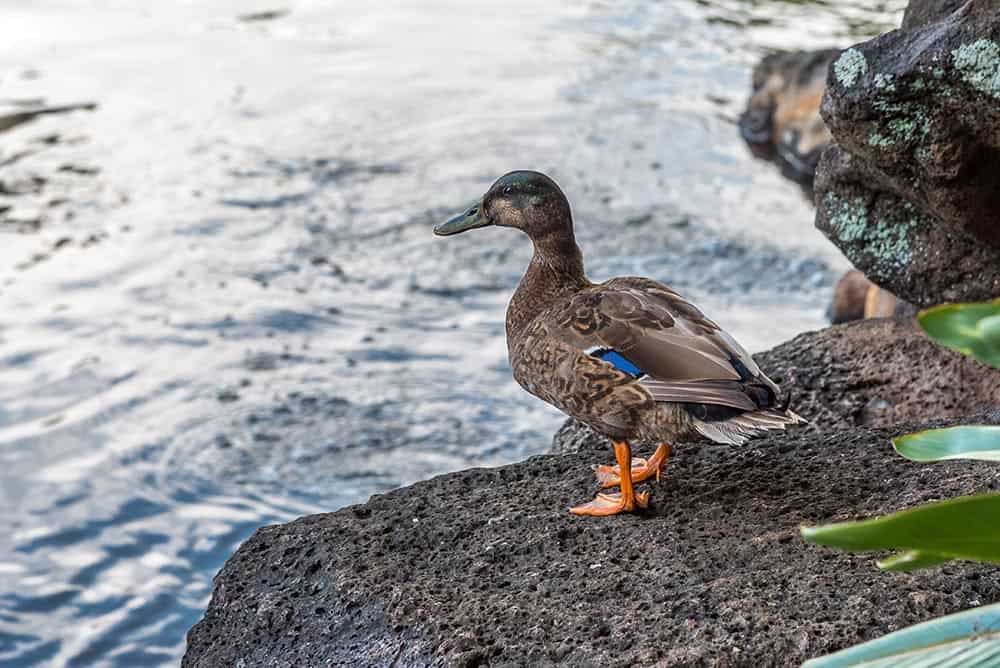The Hawaiian duck is a beautiful bird native to the state of Hawaii. These ducks are unique in that they are the only species of duck that can be found in the wild on all of the Hawaiian Islands. Hawaiian ducks are also known by the name Koloa.
The Hawaiian duck is a member of the Anatidae family, which includes all ducks, geese, and swans. These birds are closely related to the mallard duck and share many similarities.

Quick Facts About Hawaiian Ducks
| Breed Name: | Hawaiian Duck |
| Other name(s): | Koloa, Koloa maoli |
| Place of Origin: | Hawaii |
| Habitat: | Wetlands, mountain streams, lakes, rivers |
| Drake (Male) Size: | 19–19.5 inches, 21 ounces |
| Duck (Female) Size: | 15.5–17 inches, 16 ounces |
| Color: | Brown, blue, green |
| Lifespan: | 13–18 years |
| Conservation status: | Endangered |

Hawaiian Duck Origins
The Hawaiian duck was once thought to be a subspecies of the mallard, which is native to Asia and North America, but was introduced across the globe.
New evidence found that the species arose from mallard and Laysan duck breeding, and it is now classed as a separate species.
It is believed that early Polynesians brought these ducks to the Hawaiian Islands, where they eventually established populations on all the major islands.
The Hawaiian duck is the only species of duck that is native to Hawaii.
Hawaiian Duck Characteristics
This species is known as a secretive bird and is wary of other animals and humans. They are typically found in pairs or groups in tall grasses near water sources.
They quack just like a mallard but much less frequently and more quietly.
They are opportunistic omnivores feeding on:
- Begetation
- Insects
- Aquatic invertebrates
- Algae
- Mollusks
They differ from mallards as they are not migratory and stay in Hawaii all year long. These ducks are also known to perch in trees, which is something that mallards do not typically do.
Uses
These ducks were once hunted for their meat and feathers, but they are now protected by state and federal law.
Hawaiian ducks are not kept as pets nor for farming purposes, but they play an important role in the ecosystem of the islands.
These ducks help to keep mosquito populations in check and disperse the seeds of native plants. In addition, the duck’s paddling action helps to aerate ponds and streams, which is crucial for the health of fish and other aquatic creatures.
The species can act as an indicator species, meaning that they can help biologists monitor the health of an ecosystem.

Appearance & Varieties
The Hawaiian duck is a wild species and does not have any varieties. Both the male and female look very similar and are brown in color. They look much like a female mallard.
Unlike mallards, there is no distinct sexual dimorphism in feathering, which is uncommon for ducks. The male is only a little bigger than the female but shares the same coloration.
Males are also identifiable by their olive-green bills, which are distinct from the dull orange and brown of the females.
The speculum feathers (a patch on the secondary feathers) have flourishes of green and blue, and the feet and legs are orange.
The seasonal plumage of mallards and rampant hybridization make differentiating pure Hawaiian ducks from common mallards difficult.
Population, Distribution & Habitat
Hawaiian ducks are endemic to Hawaii and were once found on all islands except Lānaʻi and Kaho‘olawe. After disappearing from most islands, a pure population was found on Kaua’i.
They were then established on Oʻahu, Hawaiʻi, and Maui from captively bred birds. Unfortunately, they went on to breed with feral mallards, which diluted the population.
So, although the population is reasonably widespread, “pure” populations are still only found on Kaua’i.


Are Hawaiian Duck Good for Small-Scale Farming?
No, Hawaiian ducks are an endangered species and are not suitable for farming. Their population is dwindling to just over 2,000 known birds.
They are protected by law, so it is illegal to hunt, capture, or harm them in any way.
The loss of natural habitat and hybridization with feral mallards are the biggest threats to this species. They are also at risk of predation from introduced species such as cats, pigs, mongooses, and dogs.
As an endangered species, Hawaiian ducks should not be kept as pets or on small farms. If you are lucky enough to see one, it is best to admire it from a distance and leave it be.
Featured Image Credit: Phillip B. Espinasse, Shutterstock
